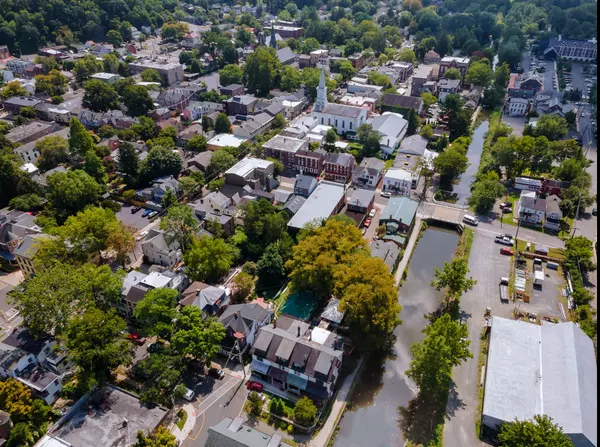New Jersey Housing & Commercial Market Recap – August 2025

July's numbers confirm what we've been tracking all year: New Jersey's housing market is demonstrating the kind of stability and resilience that makes for intelligent long-term positioning. While the frantic pace of early 2025 has cooled, the fundamentals remain strong across our core markets.
Market Overview: Stability with Selective Opportunity
The story in July was consistent absorption paired with measured inventory growth. Demand ratios held above 85% in most counties, with Middlesex actually seeing contracts outpace new offerings at 103%—a clear liquidity signal that should interest anyone managing portfolios in this region.
What's particularly noteworthy is our range of months' supply, from 1.3 to 2.3 months, across counties. We're nowhere near the 5-6 month levels that would signal softening, but we're also past the sub-1.0 months that created the unsustainable pricing pressures of 2024.
What I’d Tell Other Asset Managers
Move assets quicker in Union & Passaic to capture today’s velocity.
Price-to-sell in Sussex/Warren rather than waiting for “top dollar,” because supply is building.
Monitor days on market closely — it’s the first signal of a shift, and right now we’re seeing it tick up.
Prepare clients for a slower back half of 2025: more options for buyers, and more pressure on list-to-sale pricing spreads.
For those of you thinking ahead, this environment presents a compelling setup: limited downside risk in established markets, with emerging value opportunities in counties showing modest inventory builds. The back half of 2025 could be an ideal acquisition window, especially if we see the anticipated interest rate adjustments.
County Performance: The Details That Matter
Core Markets: Bergen, Middlesex, Morris
- Bergen County's 949 new offerings against 719 contracts (76% absorption, 1.9 months supply) represent steady, predictable performance. This is the kind of market dynamic that supports consistent cash flows and reliable exit strategies.
- Middlesex continues to outperform with its 103% demand ratio—819 listings, 842 contracts. At 1.5 months supply, this county remains one of our tightest markets. For anyone holding Middlesex assets, this velocity should translate to strong performance metrics.
- Morris County (592/505 contracts, 85% absorption, 1.3 months supply) maintains its reputation for steady, professional-grade performance. The fundamentals here support both hold strategies and selective acquisitions.
- RECAP TAKEAWAYS: Move quickly on Union, Passaic, and Middlesex assets while absorption remains high, and sharpen pricing/holding strategies in Sussex and Warren to attract value-driven buyers. Overall, 2025 is shaping up as a year of measured rebalancing, not sudden change — offering asset managers opportunities on both the disposition and acquisition sides depending on geography and timing.
Secondary Markets: Essex, Somerset, Union
- Essex County's 86% absorption rate (486 listings, 416 contracts) at 1.7 months supply shows solid fundamentals without the premium pricing pressure of the core markets. This could be attractive for value-add strategies.
- Somerset's near-perfect balance—384 listings, 385 contracts—represents the kind of sustainable market dynamic that institutional investors appreciate. The 100% demand ratio at 1.5 months supply suggests good liquidity without overheating.
- Union County (95% absorption, 1.5 months supply) continues to perform consistently with regional averages, offering solid fundamentals at potentially more attractive entry points.
Emerging Opportunities: Passaic, Warren, Sussex
- This is where things get interesting for opportunistic strategies. Passaic's 89% absorption rate at 1.9 months supply suggests room for strategic positioning, particularly for investors comfortable with moderate repositioning plays.
- Warren County (84% absorption, 1.7 months supply) and Sussex County (74% absorption, 2.1 months supply) are showing the kind of inventory build that often precedes attractive buying opportunities. Sussex, in particular, at 2.3 months supply quarter-to-date, warrants attention for value-oriented strategies.
My Insight & Opportunity
- Middlesex & Union: Strong absorption and low supply make these counties ideal for single-family dispositions and small multifamily turnarounds. Velocity supports shorter hold times and quicker cash recovery.
- Bergen & Morris: Best suited for stable rental portfolios and mixed-use holds. Predictable performance here gives consistent cash flow and reliable exit strategies for institutional investors.
- Essex & Somerset: These markets reward value-add multifamily plays. Solid fundamentals without premium pricing leave room to renovate, reposition, and capture upside without outsized risk.
- Passaic, Warren & Sussex: This is where opportunistic strategies work — especially with distressed SFRs, small apartments, and light commercial. Growing inventory allows for sharper acquisitions, repositioning, and long-term appreciation.
Strategic Considerations Moving Forward
The current environment supports a two-pronged approach: maintain performance in prime markets while preparing to deploy capital where supply is building. Counties like Middlesex and Somerset offer the liquidity and velocity that support stable returns, while Sussex and Warren present potential entry points for longer-term appreciation plays.
Shared Takeaways
- I’m advising clients to balance today’s velocity with tomorrow’s value:
- Actively perform in the core markets where liquidity remains strong.
- Quietly accumulate and reposition in the periphery before the shift deepens.
- This dual approach gives investors and asset managers both short-term results and future upside.
Given the interest rate environment, this may be an ideal time to establish positions ahead of potential monetary policy shifts. The fundamentals are strong enough to support current valuations, but the pace has moderated enough to allow for thoughtful acquisition strategies.
What I'm seeing from successful groups right now: selective opportunism in secondary markets, coupled with steady performance management in core holdings. The market is rewarding patience and discipline over aggressive speculation.
Looking Ahead
New Jersey's July data reflects a market that's both stable and active—exactly what we want to see for sustainable performance. The liquidity is intact where it matters most, and the modest inventory builds elsewhere are creating the kind of targeted opportunities that experienced investors know how to leverage.
Outlook: Late 2025 into Early 2026
The second half of 2025 is shaping up as a measured rebalancing rather than a disruptive shift. Inventory is rising slowly, days on market are extending, and absorption is coming off peak highs — but liquidity in the prime counties remains intact. This keeps sellers in a strong position in the short term while gradually creating openings for buyers and investors willing to play the long game.
As we move through the second half of 2025, this environment is expected to continue supporting measured strategies, including performance maintenance in prime markets, selective acquisition in emerging opportunities, and positioning for potential rate-driven tailwinds in 2026.
For detailed market analysis and investment opportunities in specific counties or asset classes, let's schedule a conversation. I'm always happy to share what I'm seeing on the ground and discuss how current conditions might align with your strategic objectives.
Categories
Recent Posts









GET MORE INFORMATION

